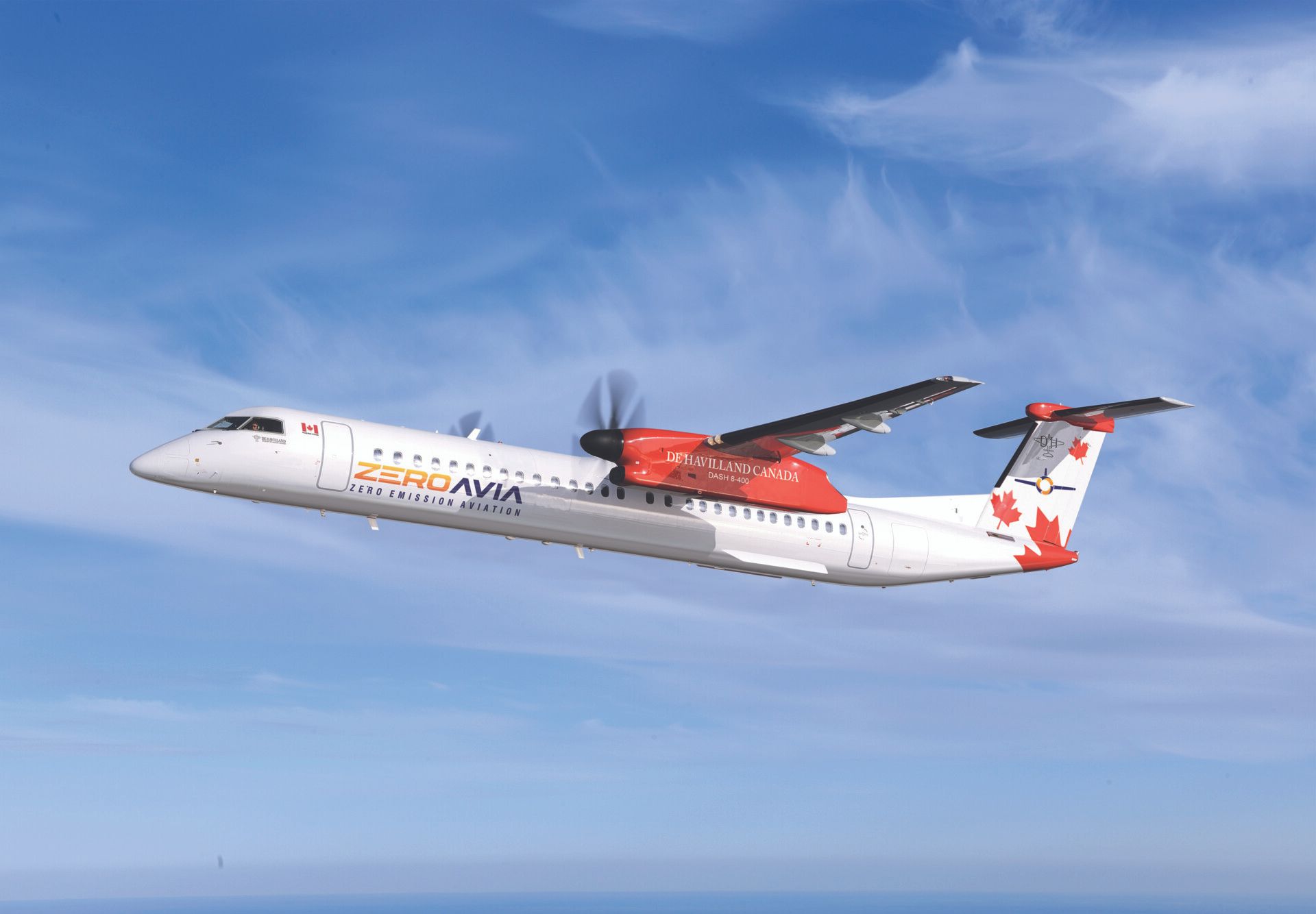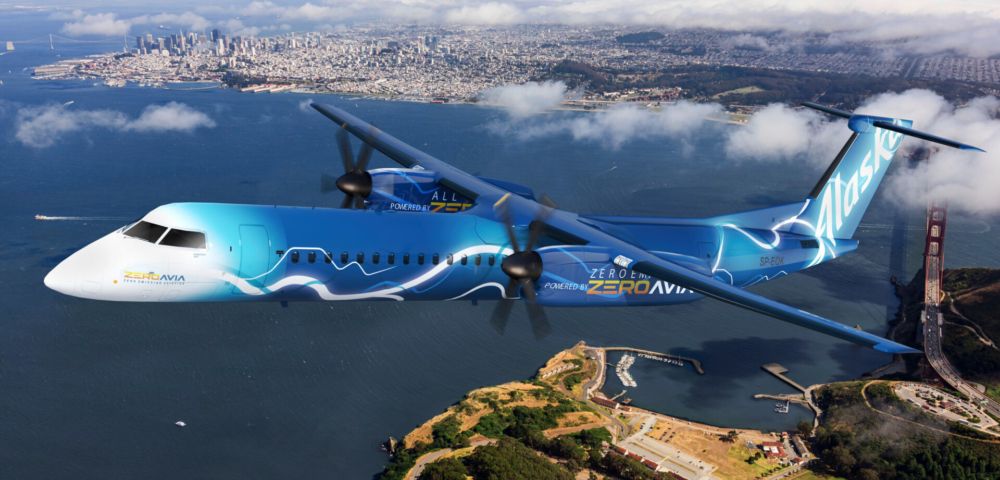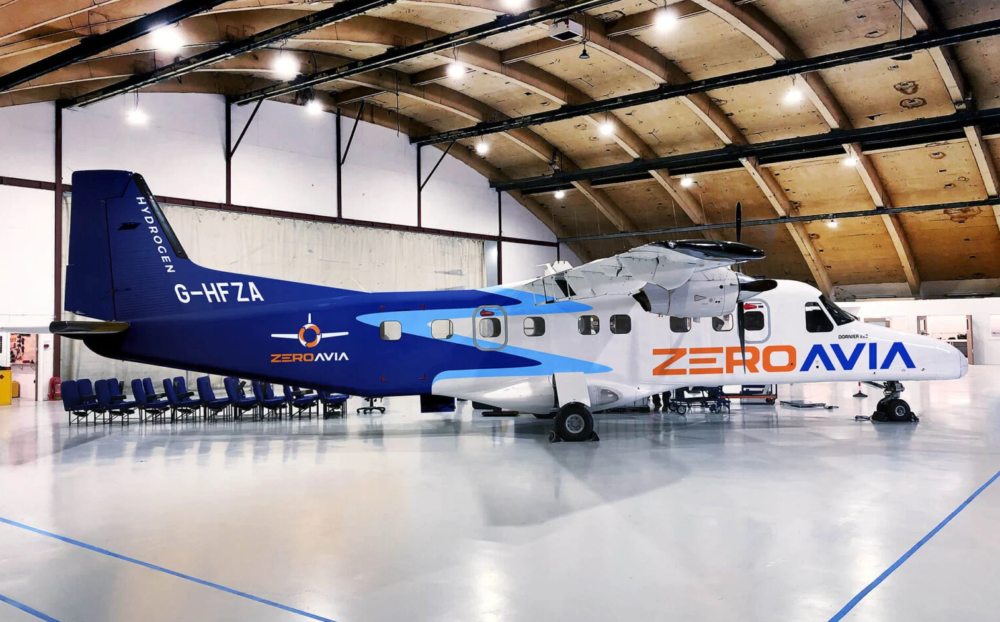Hydrogen will play a significant part in decarbonizing regional aviation - at least if this week's announcements from powertrain developer ZeroAvia are anything to go by. On Wednesday, the company said it had signed a Memorandum of Understanding (MoU) with De Havilland Canada to fit both new and existing DHC 8-Q400 aircraft with its hydrogen-electric propulsion system.
When Simple Flying spoke to ZeroAvia's Chief Financial Officer during the recent Future Flying Forum, she hinted that there would be some exciting news from the hydrogen powertrain developer in the near future. Thus far, the company has failed to disappoint.
Right on the heels of Monday's announcement of a substantial investment - and a massive vote of confidence - from United Airlines, ZeroAvia revealed today it had signed an MoU with De Havilland Canada to develop powertrains for its Dash 8-400 aircraft.
Strong belief in hydrogen-electric
The agreement includes the development of a joint line-fit and retrofit program for ZeroAvia's hydrogen-electric powertrains. It also entails the collaboration on a demonstrator aircraft and the option for De Havilland to purchase 50 ZeroAvia hydrogen-electric engines. The two parties said these options would be confirmed once there was a definitive agreement.
“De Havilland Canada has a strong belief in hydrogen-electric technology as a viable solution for de-carbonizing aviation. We are extremely pleased to be collaborating with ZeroAvia in developing climate-friendly propulsion as an option for our customers around the globe,” stated De Havilland's Chief Transformation Officer, Dave Riggs.
For new and existing aircraft
The program means that the two companies will work together in order to create a service bulletin to, as previously mentioned, fit new Dash 8-400 aircraft with hydrogen-electric powertrains from the get-go. However, the two parties will also develop an OEM-approved retrofit program for aircraft already in service.
This follows an October announcement from ZeroAvia and Alaska Airlines Group that the latter's Dash 8-400s would be used to incorporate the former's ZA2000 powertrain, capable of producing between 2,000 kW and 5,000 kW. Currently, the operator has options for up to 50 conversion kits.
Hybrid test-flights with 19-seater on the way
ZeroAvia says it expects to fly its 19-seater Dornier 228 using its ZA600 powertrain in the coming weeks. To start, it will operate on a hybrid configuration - one conventional engine and one hydrogen-electric. The first fully hydrogen-electric test flights are scheduled for 2022, putting the company on track for a 2024 certification.
The ZA2000 program is scheduled to see the first full thrust ground demonstrations of its 1.8MW engine variant by the end of next year. It will then transition to support 40-80 seater aircraft with a range of 700NM by 2026. Eventually, ZeroAvia says, it will be able to power 90-seater aircraft by 2027.
"Partnering with De Havilland Canada puts ZeroAvia on a defined pathway to line-fitting into new airframes and signals OEM appetite to make the switch to certified, zero-emission propulsion as soon as possible,” said Val Miftakhov, ZeroAvia's CEO, in a statement on Wednesday.
How do you feel about hydrogen-electric propulsion technology? Would you fly on it today if it was available? Leave a comment below and share your thoughts.



